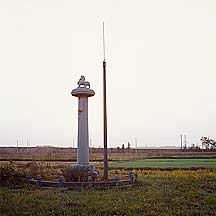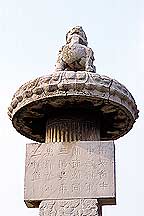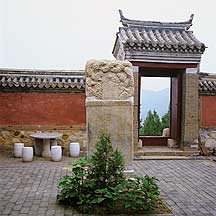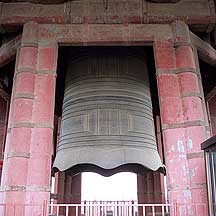Category: 建筑Architecture
纪念体图片Monuments and Memorials Pictures
-

The Ming official 胡文光 Hu Wengang, a native of Xidi, had the stone arch created in 1578. It stands 12.3 meters high and 9.95 meters wide, the largest of its kind in Huangshan city today. It used the ratio of 三门四柱五楼 Three Doors,Four Pillars and Five Roofs.
-

This large granite obelisk was completed in 1958. Its surfaces have bas-relief carvings and writings of important revolutionary events within the last hundred years in china. The large calligraphy are that of Mao Zedong. Also included are the calligraphy of Premier Zhou Enlai. The guarded monument sits on the center of the square.
-

A large stone tablet before the entrance to the temple complex. The burden of carrying the heavy stone usually goes to the unlucky tortoise. Temple (usually Daoist) are normally built near important sections of the Great Wall
-

This stela is just across the road from the previous lion. It measures 6.5 meters high and its base circle is 2.48 meter in diameter.
-

The little stone lion perch on a Buddhist lotus pedal. The pieces were created during the time when Buddhism was at one of its peaks. Many of the sinicised rulers were devout Buddhists.
-

The small lion is about .8 meters high and long. Below the lotus is a restangular stone block with 23 carved chinese characters that are mirrored(for ink-rubbing?).
-

The sculptural conception of this stone lion is the interplay of simple forms and dramatic details. Major parts of the lion(such as the mane, the body, and the legs) are condensed to large stylized shapes, while focused areas(such as the teeth, the claws, and the wings) are vividly detailed.
-

Someone or something knock off its menacing jaw.
-

Qilin is a Chinase mythical animal that were mentioned early in ancients texts such as the Book of Songs, Zhou Nan, Book of Rites, and others. Its appearance signifies the coming of an exceptional figure(such as the during the birth of Confucious) or a phenomenal change. The traditional description of a qilin is that it is a yellow beast with a body of a deer, the legs of a horse, the paws of a wolf, the tail of a cow, and one horn(or two horns). The Western unicorn, which qilin is often translated as, has a head of a horse, the hind legs of a stag, the tail of a lion, and a single horn in the middle of the forehead( from Webster's Dictionary). The qilins in this farm don't exactly fit the description. They look more like lions with unusual heads.
-

The lion's pair of wings betrays a very non-chinese mentality. Chinese animals or mythical creatures do not need wings to fly, unless it is a bird or an animal that naturally possess wings. This is also true of immortals. While western mystical animals(such as Pagasus or a unicorn), Biblical angels(Michelangelo is exception) in general, and modern western superheroes(such as superman with his cape) requires the necessary anatomy (or a symbol such as the cape) or an external force such is propulsion in order to fly, Chinese equivalents glide through space without them. Generally speaking, this is in part due to the Chinese sense of space and time being moral(that is, mental) while that of the west is material( that is, visual).
-

-

The Bronze Bull is also called the "金牛Gold Bull" because it was coated with gold. But don't rush here to scrape some because the British and French troops in 1860 and the Allied troops in 1900 had already skinned it bare. The resting bull was casted in 1755.
-

Commissoner 林则徐 Lin Zexu (1785-1850) found himself here after his famous burning of large quantities of imported British opium in Guangzhou.
-

The memorial tablet in the foreground was carved for the Qing emperor Qianlong to commemorate his visit to a temple somewhere here. This temple was constructed a year ago (2005) and claim to be on the original spot.
-

The colossal cast-iron bell is one of the three largest in China today.


